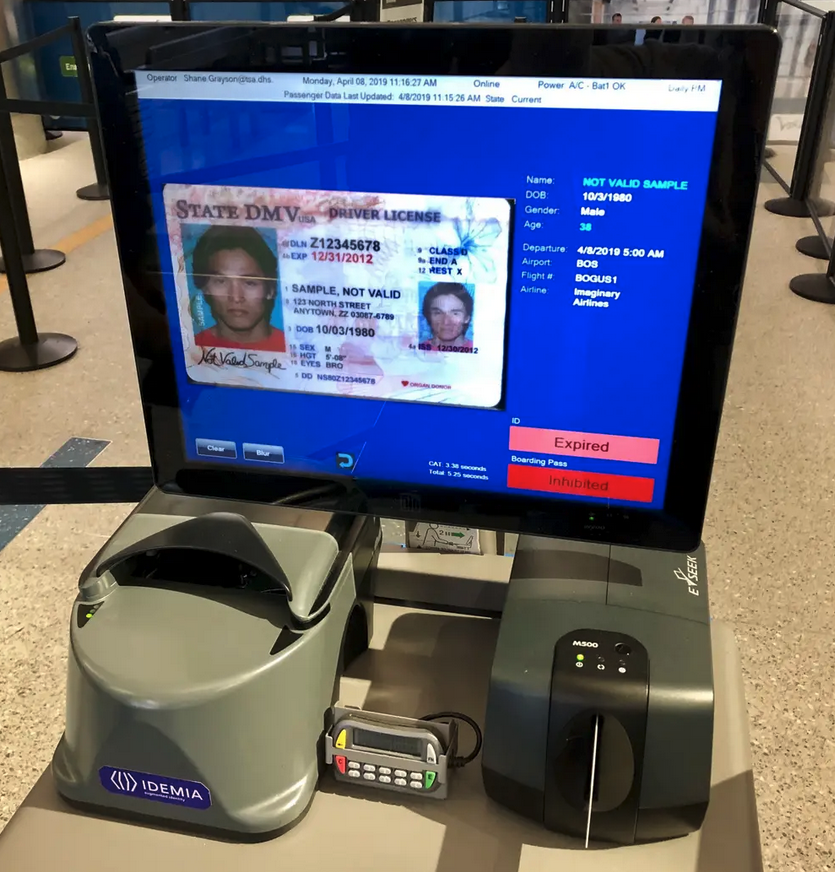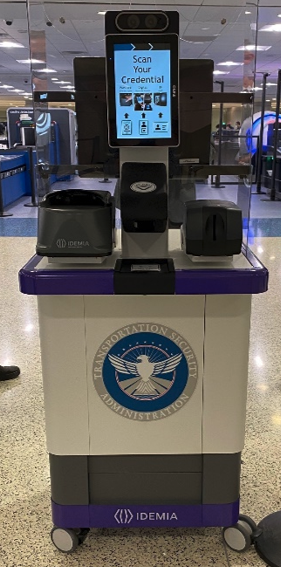As the TSA adds more and more Credential Authentication Technology (CAT) units to the country’s airports, it means less and less people have to show their boarding pass to TSA officers.
Typically, you give the TSA officer your ID, which they scan into the CAT unit. The new scanners are able to verify whether a traveler’s ID is expired or authentic (well, except for the glitch with these driver’s licenses but they’re working on it!). They’re also electronically linked to the TSA’s Secure Database, which lets the TSA officer know about the traveler’s flight details, ensuring that their flight ticket is scheduled for that day (that’s why you don’t have to show your boarding pass anymore).
The CAT scanners are also able to see the type of screening a traveler is eligible for. So if they’re on the TSA PreCheck queue and don’t have TSA PreCheck (granted, the screener at the entry of the queue should have caught that), the TSA officer won’t let them through to the PreCheck queue.
It’s a nice convenience, but it also makes one wonder, what does the TSA officer see when they scan your ID?
Photography isn’t allowed in the secure area, but if you hunt around, you can find a photo or two, made accessible by the TSA, of what officers see after they swipe your driver’s license or other ID. Here’s what it looks like:

Of course, that picture is of a purposefully fake ID. If it’s a real ID (as opposed to Real ID – you see what I did there?), the pink ID window would typically say “Normal” (if it was good to go) and the “boarding pass” window would be yellow and say TSA PreCheck, BP Check (for a random boarding pass check), etc.
Meanwhile, before they’ve even completed introducing CAT to all U.S. airports, the TSA is already in the midst of introducing new technology.
Called CAT-2, the new tech “enhances detection capabilities for identifying fraudulent IDs such as driver’s licenses and passports at a checkpoint and it increases efficiency by automatically verifying a passenger’s identification,” Christopher Murgia, TSA’s Federal Security Director for Maryland, said in a recent TSA press release. “This helps ensure that we know who is boarding flights.”
With CAT-2, the unit takes your photo and compares it to the face on your ID. From Lisa Farstein, spokesperson for the TSA:
.@BWI_Airport has @TSA credential authentication technology units with a camera at all of its checkpoint lanes. The units have a camera to match the individual’s face with the face that appears on the traveler’s ID such as the person’s license or passport. (1 of 3) pic.twitter.com/tk3VU4Rf4H
— Lisa Farbstein, TSA Spokesperson (@TSA_Northeast) April 27, 2023
Farbstein continues:
The technology enhances detection capabilities for identifying fraudulent documents at the security checkpoint. The photos are not saved and are only used to match the person standing at the travel document checking podium with the photo on the ID that is being presented.(2 of 3)
It’s a self-serve unit that reduces touchpoints. Insert the ID. No handing a boarding pass or ID to a TSA officer. The benefits: improved efficiency, convenient for travelers and enhanced security. (3 of 3)
According to the Dep’t of Homeland Security, the procedure for CAT-2 is as follows:
- Passenger presents digital ID at the TDC (read: Travel Document Checkpoint) to engage CAT-2 to prompt the use of the digital ID.
- The passenger’s device prompts the passenger to provide consent to securely transmit the requested data (i.e. name, gender, date of birth, and photo) to TSA. The digital ID is submitted to CAT-2
- CAT-2 takes a live picture of the passenger for a 1:1 match against the portrait image from the digital ID.
- CAT-2 verifies biometric match, Secure Flight Vetting status (read: TSA PreCheck or other status), ID authentication, and itinerary information by verifying the digital ID is from the correct issuing Authority (read: they can tell if you have fake ID).
- CAT-2 confirms passenger identity and TSO directs passenger to apporpriate screening lane or manually resolves in the event of a no-match outcome.

Portable CAT-2 Unit // PC: TSA
Oh, and if you don’t want your picture taken, TSA can and will still do a standard ID check, same as always.
According to the TSA, CAT-2 units have been deployed at Salt Lake City International Airport (SLC) and Denver International Airport (DEN), with more to follow.
Want to comment on this post? Great! Read this first to help ensure it gets approved.
Want to sponsor a post, write something for Your Mileage May Vary, or put ads on our site? Click here for more info.
Like this post? Please share it! We have plenty more just like it and would love it if you decided to hang around and sign up to get emailed notifications of when we post.
Whether you’ve read our articles before or this is the first time you’re stopping by, we’re really glad you’re here and hope you come back to visit again!
This post first appeared on Your Mileage May Vary

1 comment
Not good to